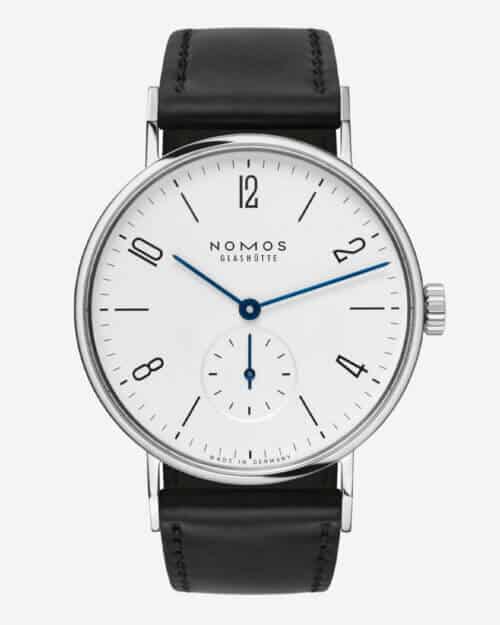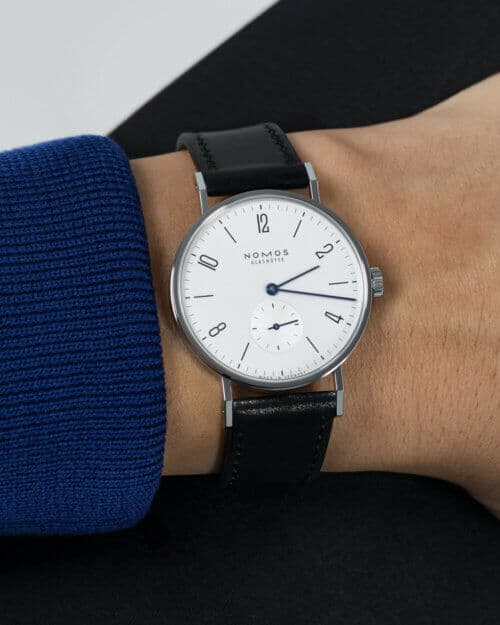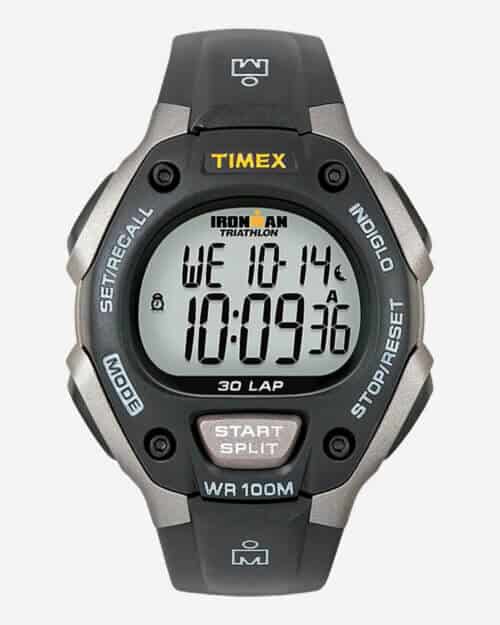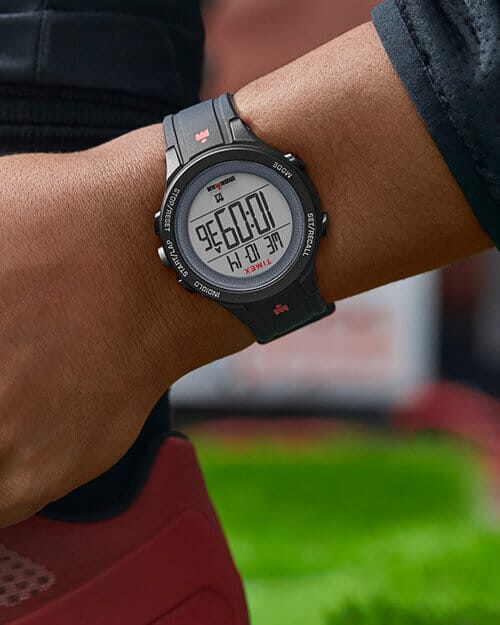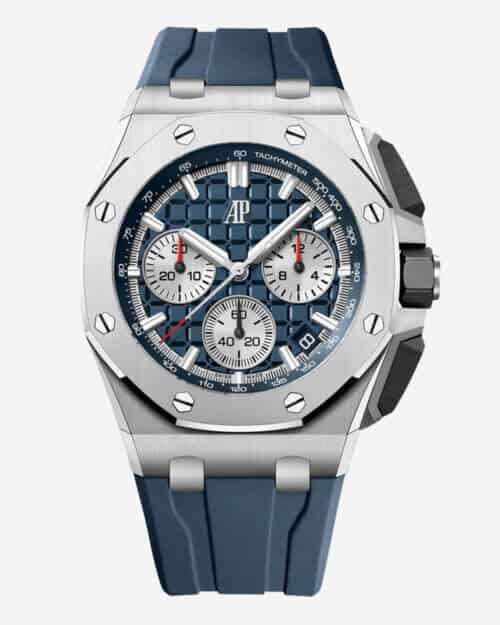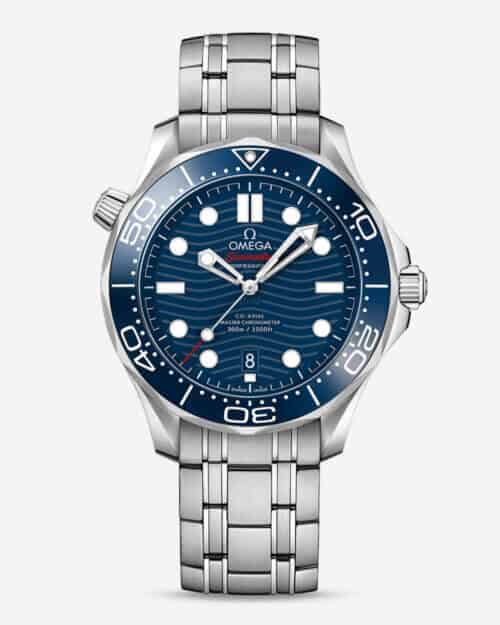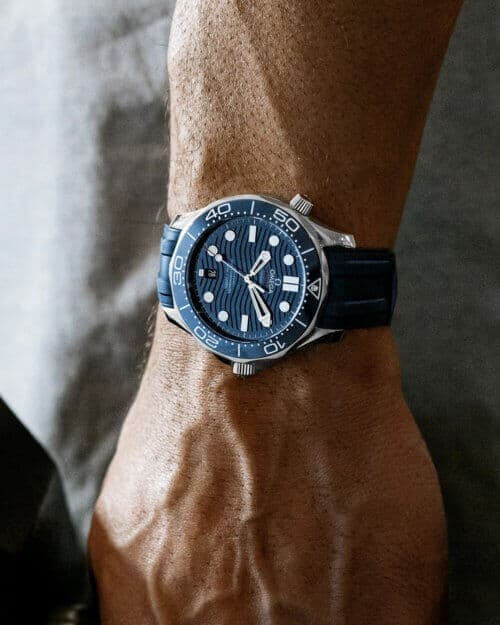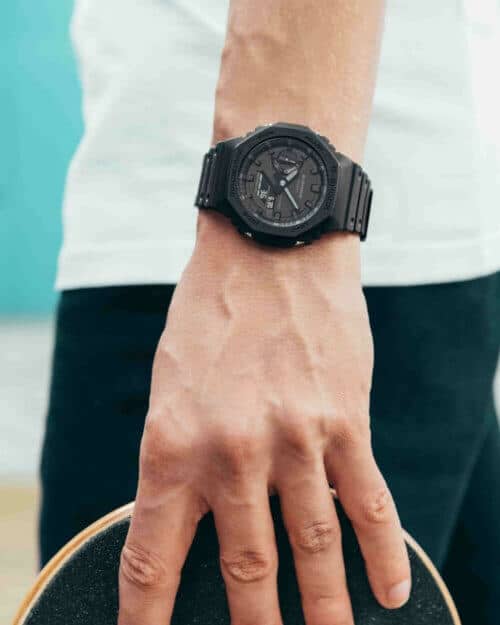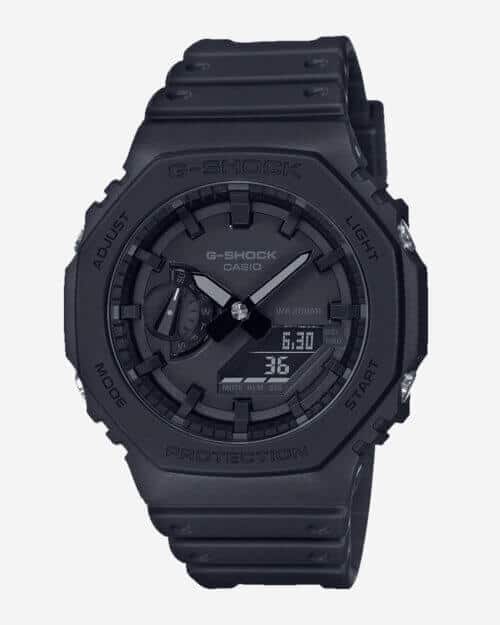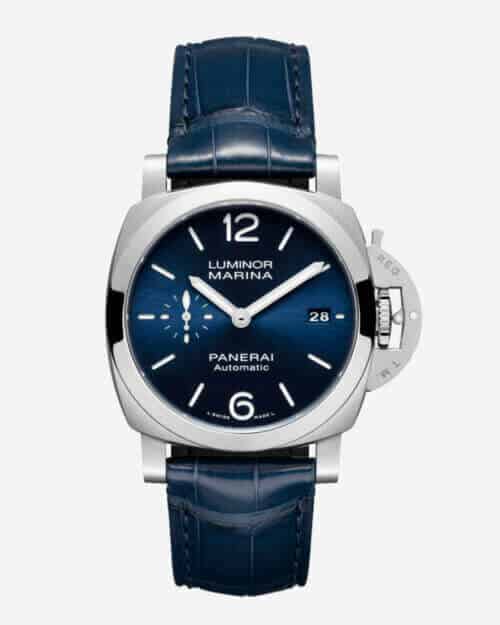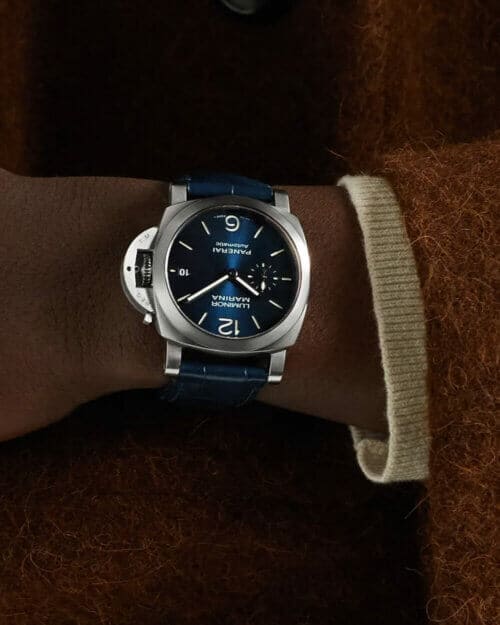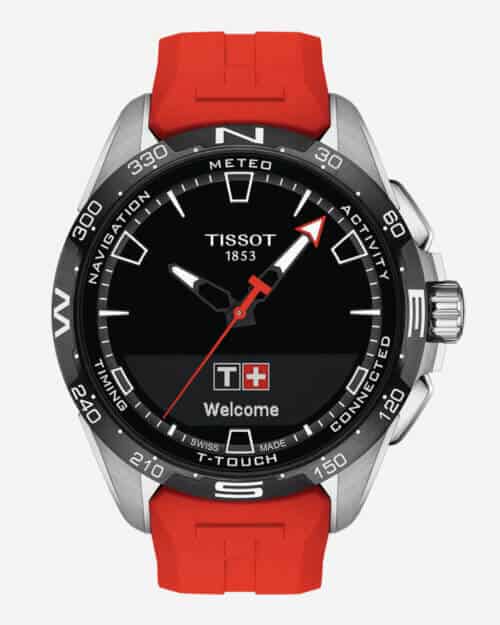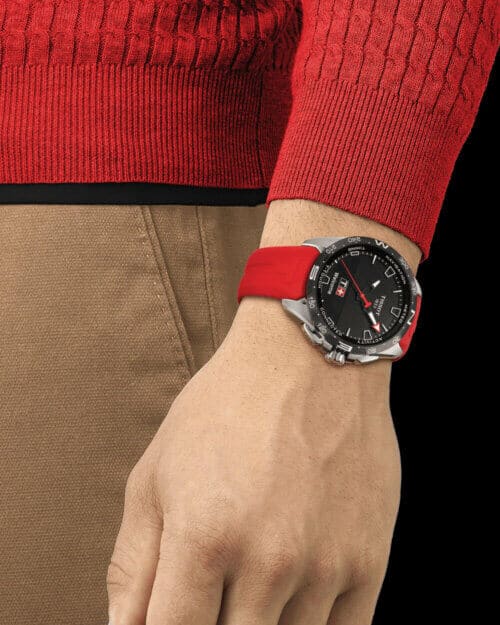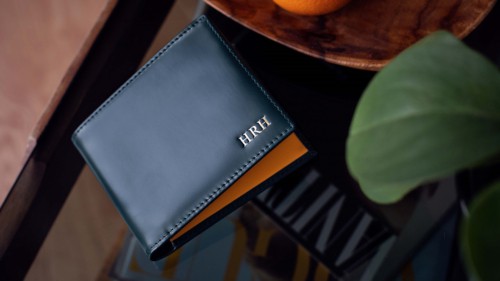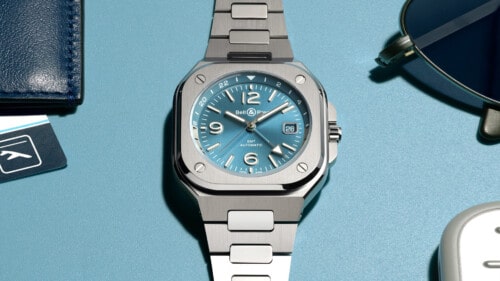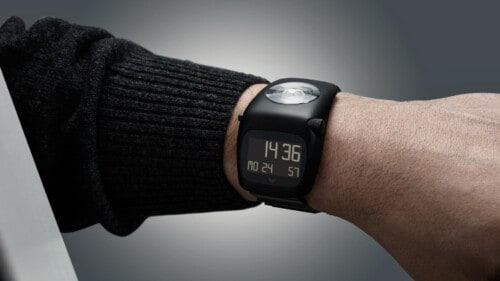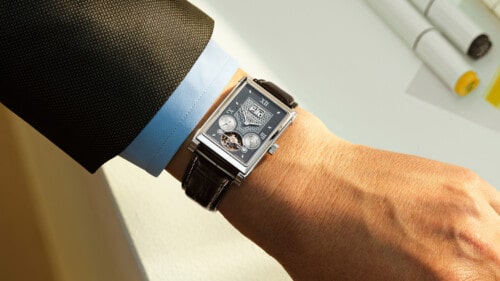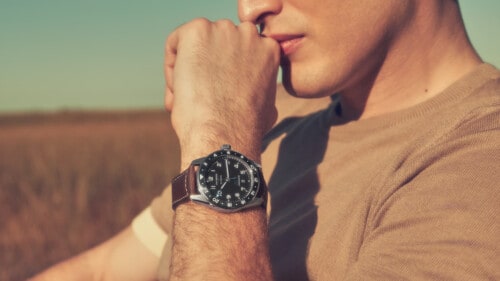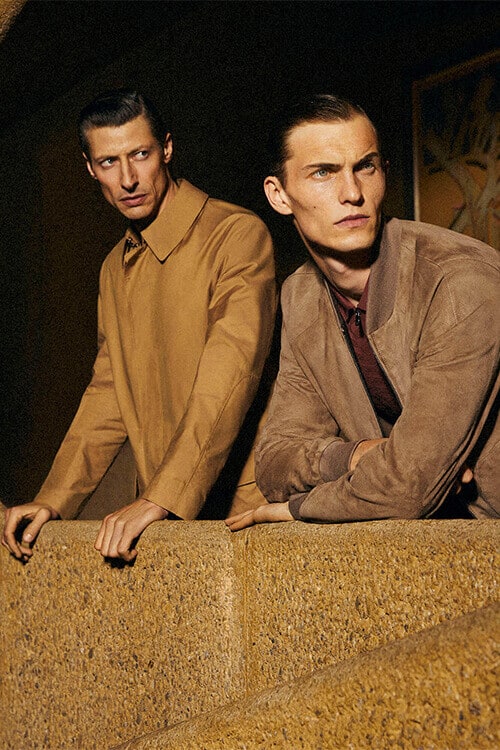7 Iconic 90s Watches You Can Still Buy Today
The timepieces that arguably defined a decade and haven’t changed dramatically since the day they were launched. Prepare for a heavy dose of nostalgia.
AOL Instant Messenger, Mini Discs, Blockbuster Video, buying CD singles of the latest song to soundtrack a Levi’s ad… there are myriad cultural touchpoints that only those who lived through the 90s will really recognise. Millennials can Y2K it all they like with their wide-legged jeans and shiny puffer jackets, but they will never know what it’s like to dance along to the AOL dial-up sequence or experience the thrill of seeing Keanu Reeves contort around bullets, simultaneously defying laws of gravity, physics and general attractiveness.
However, not everything from this decade has been relegated to the CD sale bin at HMV – there are still watches launched then that have withstood the tests of time and taste and are available now. We’ve chosen seven styles that arguably defined a decade and haven’t changed dramatically since the day they were launched.
Nomos Tangente (1991)
Although the original Nomos was destroyed by lawsuits and bankruptcy at the beginning of the 20th century, version 2.0 has been one of Glashutte’s greatest success stories. It was resurrected in 1990, after the fall of the Berlin Wall, by Roland Schwertner, an engineer and computer specialist who had cannily bought the name of the moribund watch brand.
It was to be a company inspired by the aesthetics of Bauhaus and the principles of the Deutscher Werkbund: a German association of artists, architects, designers and industrialists established in 1907. Nomos’s first collection featured the Orion, Ludwig and Tetra alongside the Tangente. With their clean dials and minimalist lines, they were the antithesis to the brash flamboyance of 80s watches and, in a move that was very prescient, they were gender neutral.
Thirty-one years later, Nomos is now a fully-fledged Glashutte brand. Only companies that make at least 50% of the watch’s movement in the town are allowed to call themselves Glashutte watchmakers; Nomos makes 95% of its parts in house. It is also the largest producer by volume in the region.
While it may have added colour and complications to its roster, its original suite of watches looks as fresh today as a pair of Levi 501s.
Timex Ironman Classic (1992)
The first Ironman came out in 1984 as a bid to revitalise flagging sales at Timex. It was a co-collaboration with the Ironman Triathlon, a watch tough enough withstand the challenges of this sporting event. The $20m advertising campaign paid off and the Ironman found an audience among the military and law-enforcement personnel.
However, it was a 1992 update that made it more than a niche product for muscle men. This was the year the mini white corner backlight was replaced by Indiglo: an electroluminescent back panel that emits a distinct greenish-blue light evenly over the whole dial. The watches containing this new technology were black and silver and had a different strap to the original Ironman. They were also only available in K-Mart.
Indiglo dramatically improved the watch’s legibility – so much so that in the 1993 World Trade Centre terrorist attacks, a man used the light from his Ironman to guide himself and his colleagues down 40 flights of stairs to safety. This technology also boosted its overall appeal and the Ironman continues to flex its muscles today.
Audemars Piguet Royal Oak Offshore (1993)
Rumour has it that Gerald Genta, the man who designed the Royal Oak, single-handedly creating the luxury steel sports watch market, was so offended by the Offshore that he stormed onto the Audemars Piguet stand at BaselWorld in 1993 and castigated the brand for having ruined his original design.
It is certainly a brash update of Genta’s sleeker steel masterpiece. Designed by Emmanuel Gueit in response to then-managing director Stephen Urquhart’s request for a larger Royal Oak, apparently the prototypes were so badly viewed internally that Urquhart took to avoiding Gueit in the HQ’s hallways. In order to entice people to buy this oversized timepiece, with its 42mm case and enormous rubber gasket lining the area under the case, the first 100 just had ‘Royal Oak’ on the caseback.
Despite been awarded the unfortunate nickname ‘The Beast’, and receiving a less than enthusiastic reception from the watch-buying public, the Offshore has become an iconic collection in its own right. It is the testing ground for new materials; the place where Audemars Piguet has fun.
It may not have been a success when it first arrived on the scene, but the watch landscape would arguably be different had Gueit not stuck to his guns.
Omega Seamaster Diver 300m (1993)
This was the watch that made it possible for James Bond to wear a diver with a dinner suit. The Seamaster has been a part of the Omega family since 1948, however in 1993 the 200m was replaced by this new version. Not only was it good for an extra 100m, its new scalloped bezel and gently sweeping lyre lugs gave the design a refinement that rubbed some of the ruggedness off its predecessor.
Interestingly, the launch model was quartz, which was precisely the watch that costume designer Lindy Hemming chose when Bond was rebooted in 1995 with Pierce Brosnan. The more streamlined silhouette combined with the Bond cache ensured that this revamped Seamaster became the style icon of the decade.
The movement’s now been upgraded to a co-axial master chronometer, there’s a number of new dial colour options, and the brute wearing the suit has changed and subsequently hung up his holster for good, but the Omega Seamaster 300m still looks as good as it did nearly 30 years ago. If only we could all say the same.
Baby-G (1994)
Look at a Baby-G and can practically hear the ‘zig-a-zig, ahhs’. First launched in 1994, with its candy-cane colours and smaller case size, this was Casio’s bid for women’s wrist real estate. It had all the toughness of its iconic G-Shock but in a prettier outfit.
As the watch’s popularity grew, Casio ditched the ‘just for women’ aesthetic, repositioning the Baby-G as reflection of youth culture instead, with designs themed around surfing, snowboarding, music, such as reggae and hip-hop, and even a collection aimed at couples who wanted matching watches.
Baby-G peaked in the late 90s but the revival of the decade’s fashion in the mid-2010s saw them back on wrists again. Just in time for the Spice Girls reunion.
Panerai Luminor (1993)
By the mid-90s, if you were an action hero you wore a Panerai. Unknown, even in its native Italy due to being solely produced for the Italian Navy’s frogmen divers, it was suddenly everywhere, appearing on the wrists of Sylvester Stallone and Arnold Schwarzenegger both on and off screen. The pedalled fiction is that Stallone saw a Panerai Luminor in a jewellery shop window while he was filming Daylight in Rome and loved it so much, he bought watches for all his friends including Johann Rupert, boss of Richemont, which was how Panerai was added to that particular luxury stable.
Like much of Panerai’s back story, it isn’t true. A well-connected Montenegrin photographer, Monty Shadow (aka Cedo Komjenovic) was the mastermind behind a well-engineered case of product placement. He had read an article in a Japanese magazine about Panerai, where collectors loved the brand – so much so that it was the Japanese interest that led Panerai to creating a limited run of recreations of its old diving watches using a Swiss private label company.
Shadow was able to get his hands on a Panerai Luminor Logo 5218-201 from Grimoldi Jewellers in Milan. Shadow moved in celebrity circles, and it was he who bought the watches for Stallone and Schwarzenegger in 1994. Daylight came out in 1996 and photos two years prior to the film’s release show Stallone wearing his Panerai. It was Shadow who invented the Stallone story as a last-ditch PR effort for the failing brand to generate public interest in its watches. It was he who leveraged the silver screen product placement deals and it was even he who came up with the name Slytech.
All this was uncovered by some Sherlock-esque levels of detective work by Jose Pereztroika, which you can read in-depth here. Back story notwithstanding, the Luminor is still a classic piece of design that has endured, even if it’s origin myths haven’t.
Tissot T-Touch (1999)
We see out the decade with a watch that offers a flavour of things to come. Before Apple invented Taptic, there was the Tissot T-Touch. Launched at the end of the 1990s, this revolutionary design used the sapphire crystal as the user interface. By pressing a button at three o’clock, the crystal and dial were activated, which meant the user could access the digital options simply by tapping the dial.
The time was an analog display, which could then transform into a compass. The watch also came with alarms and calendars as well as barometers and altimeter sensors. You could even programme it to function as a GMT. And all this 16 years before the Apple Watch.
The formula Tissot hit on obviously worked because the current iteration of the T-Touch hasn’t changed much. It has a few more functions, such as the ubiquitous step counter, and is now powered by a solar movement rather than the original quartz.
